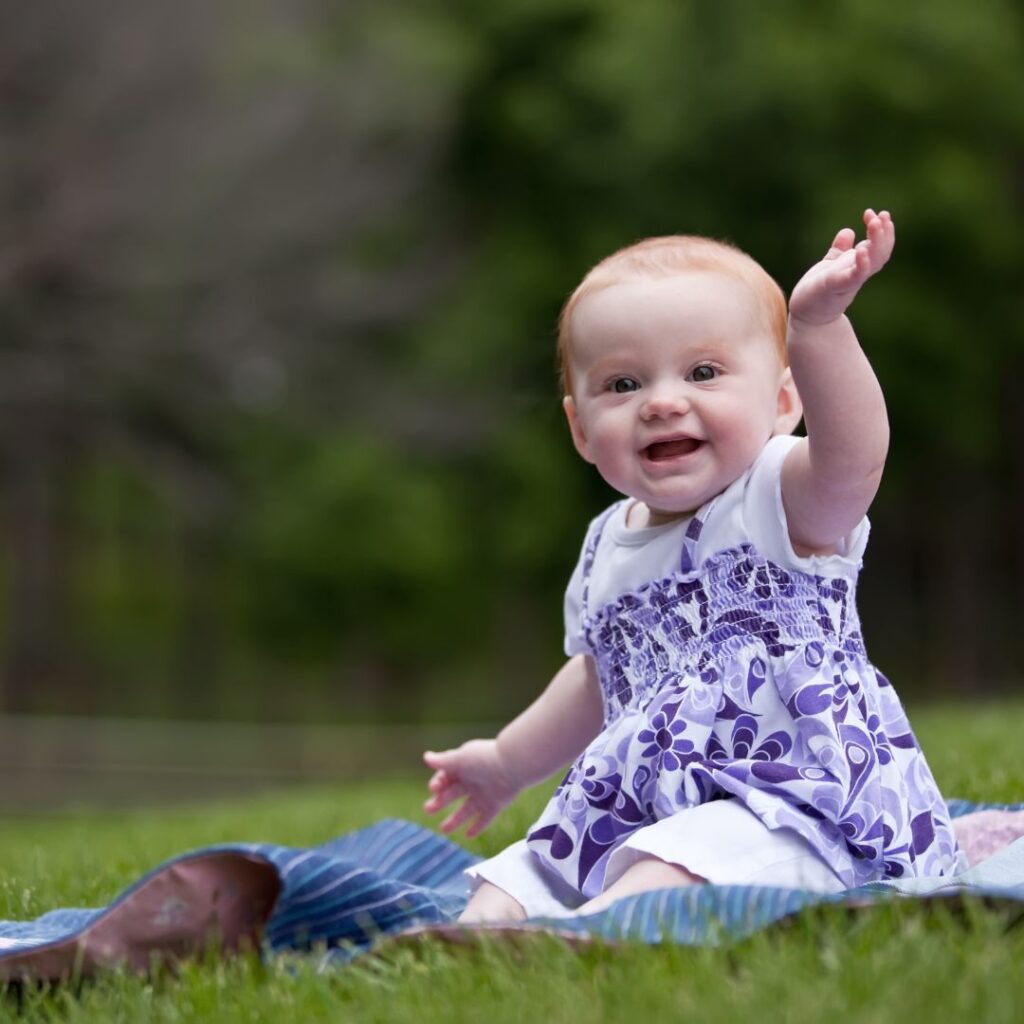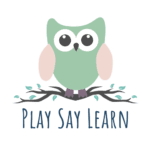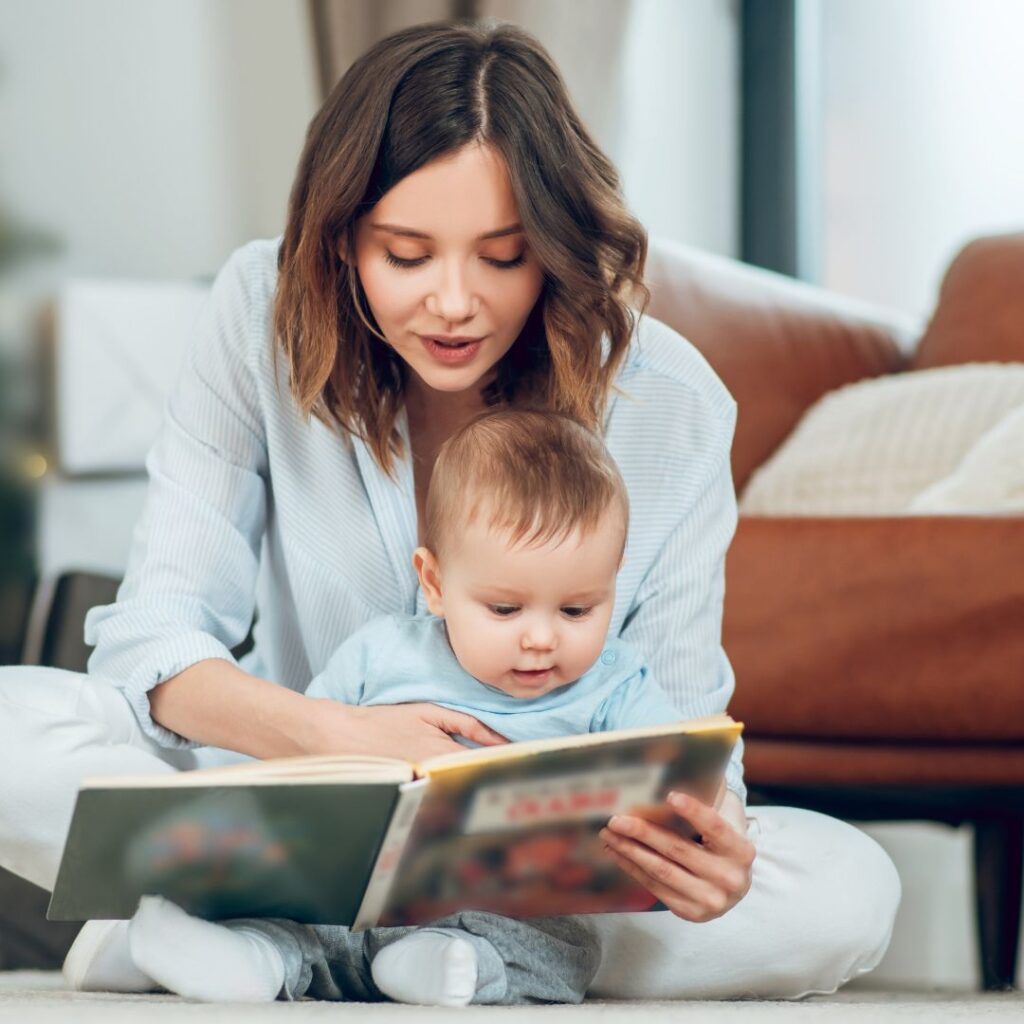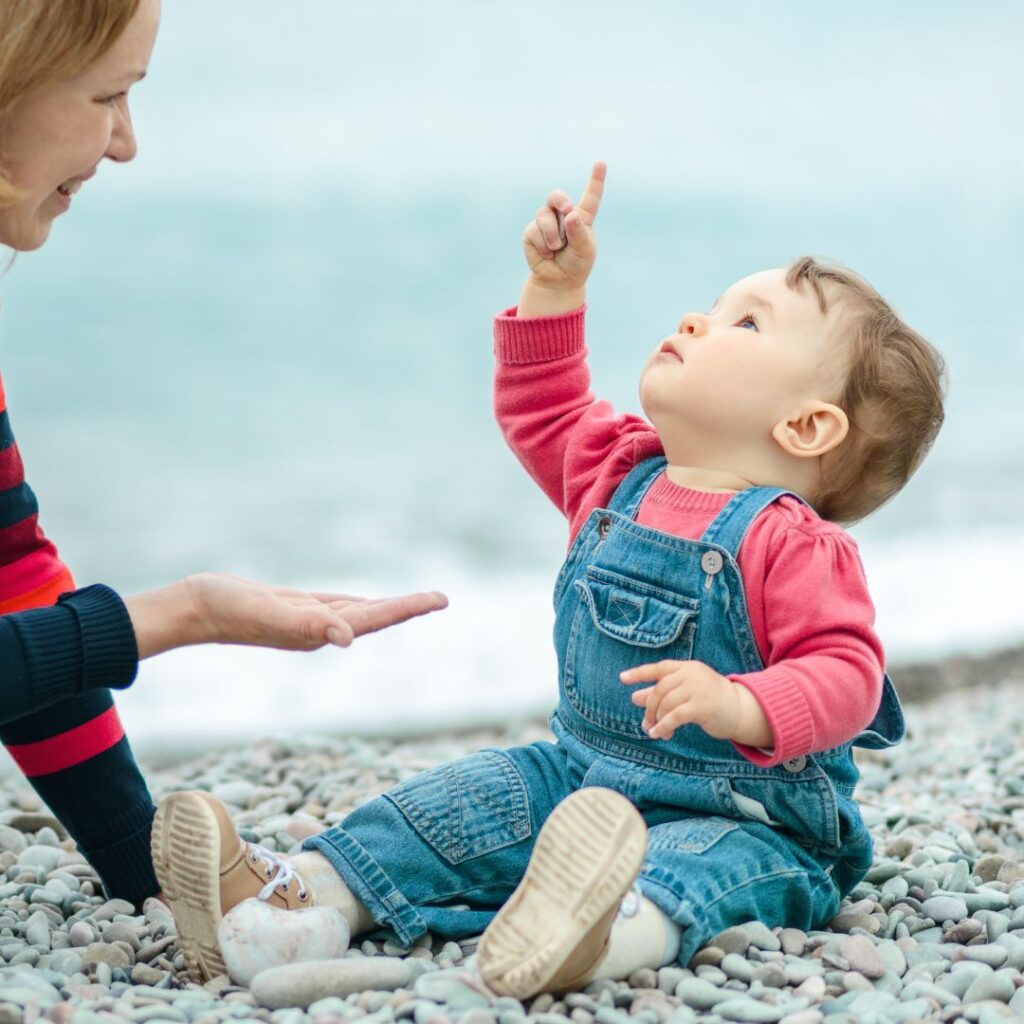What Should My 16 Month Old Be Saying?
Why 16 Gestures By 16 Months Is An Important Communication Milestone
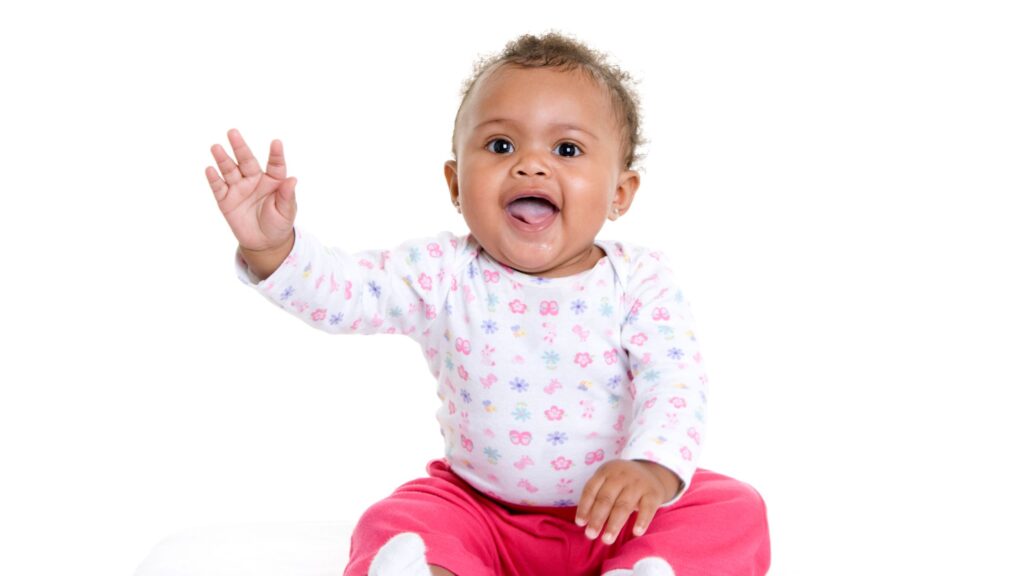

As parents, we eagerly await those magical first words from our little ones. But did you know that gestures play a crucial role in a baby’s language development? In this post, we’ll explore the significance of the milestone “16 gestures by 16 months” and highlight the progression of communication skills during this transformative period.
Why are gestures so important for early communication development?
- Gestures lay the foundation for social skills
- Gestures provide a means for babies to express their needs before they can speak
- Teaching gestures fosters imitative skills as well as symbolism, prerequisite skills for learning to talk
- Studies show a strong link between gesture development and future language abilities
Gestures lay the foundation for the development of important social and emotional skills. Through gestures, infants learn to engage in joint attention, a process where they and their caregivers focus on the same object or event. This shared attention promotes bonding, enhances social interaction, and establishes the groundwork for effective communication in the future.
Gestures also provide a means for babies to express their needs and desires before they can speak. By using gestures such as pointing, reaching or waving, babies can convey their intentions and direct the attention of caregivers towards specific objects or actions. Gestures provide a powerful bridge between understanding and expression, serving as a stepping stone toward spoken language. By observing and interpreting their caregivers’ gestures, infants begin to comprehend the intentions and meanings behind these nonverbal cues. In turn, they develop the cognitive and social foundations necessary for language acquisition.
Studies show that there is a strong link between gesture development and future language abilities. Researchers have found that the gestures infants exhibit between 9 and 16 months can predict their language skills two years later. This predictive relationship between gestures and language abilities holds significance for a few reasons. First, it helps us to identify children at risk for language difficulties and allows us to intervene early. In addition, knowing the predictive value of gestures, we can develop targeted intervention strategies. By nurturing gesture skills, caregivers can promote robust language development and enhance communication abilities in children at an early stage, positively influencing their language outcomes in the long term.
How babies learn to use gestures:
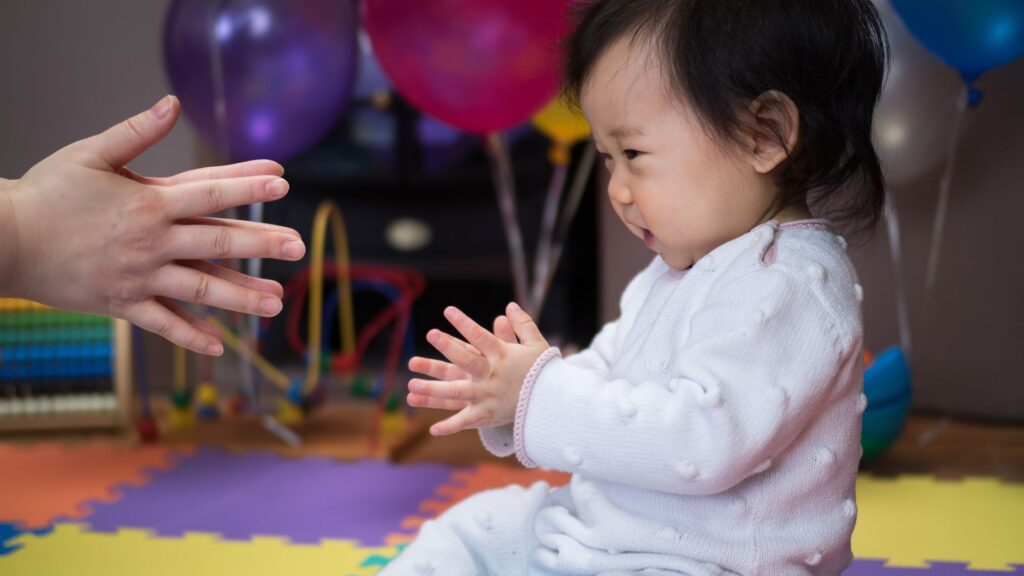

From the earliest months of life, babies are keen observers of their caregivers’ actions and gestures. They naturally gravitate towards human faces, focusing on facial expressions, hand movements and body language. Through this attentive observation, infants begin to understand the meanings behind various gestures and their relevance to daily interactions.
Caregivers play a crucial role in this stage by modeling gestures consistently and responding to the baby’s attempts to communicate nonverbally. By interpreting and responding to their gestures, caregivers reinforce the association between specific gestures and their intended meanings. For example, when a baby points at a toy, the caregiver responds by acknowledging the pointing and providing the toy, thereby reinforcing the understanding of pointing as a means of expressing desire.
Imitation is a powerful learning tool for infants. As their motor skills develop, babies begin to imitate the gestures they have observed. Initially, imitation may be imprecise and not perfectly replicate the caregiver’s gestures. However, through repeated attempts and practice, babies refine their motor skills and gradually become more proficient in imitating gestures accurately. Caregivers can support this stage by providing clear and consistent models of gestures, allowing babies to observe and imitate at their own pace.
As babies gain confidence in their ability to use gestures, they engage in a communication and feedback loop with their caregivers. They learn that gestures are an effective means of expressing their needs, wants and emotions, and they develop an understanding of the power of communication.
When will my baby use gestures?
During the first few months of life, your baby is absorbing the sights, sounds and interactions in her environment. While verbal communication is limited at this stage, nonverbal gestures lay the groundwork for future language development. These early gestures serve as a means of expressing basic needs and connecting with caregivers. Some common gestures you may observe in the first months of life include:
- Eye contact: Babies begin establishing eye contact, engaging in visual exchanges with their caregivers.
- Facial expressions: Smiling, frowning, or grimacing are the baby’s way of expressing emotions and developing early social skills.
- Reaching: By stretching out their arms or hands, babies indicate a desire to be held or explore their surroundings. We can see this first reaching gesture as early as 6 months of age.
Gestures at 9 months
At 9 months, your baby’s gestures become more purposeful and deliberate. Babies are eager to communicate and express their needs and desires. They learn approximately two new gestures each month between 9 and 16 months. Some gestures you might expect to see include:
- Reaching: Your baby will continue to use reaching as a way to indicate her desire to be held by particular caregivers. She will also reach out for objects and to explore her surroundings.
- Pointing: Your baby may start at first using a reach with an open hand to point at objects of interest, such as a favorite toy or a family pet.
- Waving: As social interactions become more important, your baby may start waving to greet familiar faces or say goodbye.
Gestures at 10 months
By 10 months, your baby’s motor skills have improved, leading to further development in his gestures. He is becoming more adept at expressing his needs and interacting with the world around him. Here are some gestures you might notice:
- Reaching with intent: At this stage, reaching becomes more focused. Your child may reach out more specifically for objects he desires or to initiate play.
- Giving: Your baby may offer objects or toys to you or others, demonstrating an early understanding of sharing and social interactions.
- Showing: As his curiosity grows, your baby might start pointing or showing you objects, drawing your attention to things that catch his interest.
- Shaking head “no”: Babies typically learn to shake their head “no” by turning away from food they do not like and then looking back to see if their parent responds by moving the undesired food away.
Gestures at 11 months
As your baby approaches her first birthday, her gestures become more refined and purposeful. She is developing a better understanding of cause and effect as well as social cues. Here are some gestures you can expect:
- Shaking head “no”: Your baby may begin to shake her head in response to simple questions to indicate her wants or dislikes.
- Patting: When seeking comfort or reassurance, your baby might start patting a caregiver or herself, showing a growing ability to self-soothe.
- Clapping: Your little one may try to imitate you clapping your hands by bringing her hands together as a way to express joy or excitement, especially when she sees something she finds amusing or entertaining. It might not be so precise yet, but it may resemble clapping!
Gestures at 12 months
As your baby turns one year old, his gestures continue to evolve, reflecting his expanding understanding of the world and his desire to communicate. Your baby will become more mobile and independent, eager to explore the world around him. This is an exciting time as first words often emerge around the first birthday! Here are some gestures you might observe:
- Nodding “yes”: Your baby may begin to nod to indicate agreement or acknowledgment. He may nod “yes” in response to questions or prompts.
- Pointing: Pointing is slowly being shaped from an open hand point to a more refined pointing with the index finger.
- Children tap with their fingers to draw the attention of others to items of interest. For example, your child might tap his fingers on a picture in a book to draw your attention to it.
- Children’s gestures become more clearly intentional and are often produced with emphasis and are now accompanied by grunts or speech sounds and even first words.
What to expect after your baby's first birthday
From about 13 to 16 months of age, your baby’s gestures become more diverse, allowing them to convey a wider range of thoughts and emotions. Babies are becoming more skilled at expressing themselves and establishing connections. Language development really starts to blossom during this period, with words gradually accompanying their expanding repertoire of gestures.
Gestures at 13 months
At 13 months, children are learning by observing others and copying what they do and say. Here are some gestures you can anticipate:
- Blowing kisses: Babies learn to imitate blowing kisses, an adorable way to express affection!
- Your baby will be able to imitate you clapping your hands and will clap her hands to express joy or excitement.
- You may see symbolic gestures taking shape as your baby uses gestures to represent ideas or actions such as pretending to feed a doll or holding a phone to her own ear (that is, if you have modeled this behavior for your child. It’s tough to say these days since we often use the speaker or bluetooth when we are talking on the phone!)
Gestures at 14 months
By 14 months, observational learning skills are strong and toddlers are able to use symbolic communication to convey messages to you. Their repertoire of gestures continues to grow and this leads to spoken words. Some gestures you might see include:
- Pointing with index finger: That open hand pointing that your toddler used in previous months now becomes more refined so that he can isolate and use his index finger to point to something in the distance.
- “Shhh” gesture: Your toddler will start using his index finger for the “shhh” gesture.
Gestures at 15 months
At around 15 months old, toddlers start using gestures in a more symbolic manner, resembling the way words are used with intention and purpose. Their gestures not only convey their thoughts but also demonstrate their awareness of sharing ideas with others. Common gestures at this age include:
- Thumbs up: Your toddler may imitate a “thumbs up” to indicate yes.
- “Stinky” nose pinch: Your toddler might pinch her nose to indicate that something is “stinky”.
- Hand up for “wait”: Your toddler may hold up a finger or a hand to show you that she wants you to wait.
Gestures at 16 months
By 16 months and beyond, you will see other symbolic gestures continue to develop. These gestures will help to foster the continued development of speech and language. While more spoken words start to emerge, your child may continue to use a combination of words and gestures to communicate. Some additional gestures your toddler might use are:
- “I dunno” arms: Your toddler might hold up both hands in an “I don’t know” type gesture when he can’t find something or when asked “where’s …” and he doesn’t know the answer.
- “High five” hand gesture or even a “fist bump”.
- “Peace” sign: Your toddler might imitate you holding up two fingers to make the “peace” sign.
Remember that every baby develops at his own pace, and the timeline I’m sharing here is a general guideline. It’s important to provide a supportive and nurturing environment to encourage your baby’s communication skills as he continues to grow and explore the world around him. Although the gestures a child learns varies depending on his family or culture, using 16 gestures by 16 months is still a crucial milestone for all children because it is the precursor to a vocabulary burst at 18 to 21 months. If your child is not yet saying a few words by 16 months and you notice a lack of gesturing, it is a good idea to have a discussion about it with your pediatrician or better yet, a speech-language pathologist.
How to encourage your baby's use of gestures
Here are some helpful suggestions to foster your baby’s use of gestures:
- Incorporate gestures into everyday routines: Integrate gestures into your daily interactions with your little one. As you perform tasks, use gestures while verbalizing the associated words. For instance, when reaching your arms up to model a request to be picked up, say “up, up, want up?”
- Direct attention with pointing: Point towards intriguing objects or activities to capture your baby’s interest. Label the item by saying “Look at the ___ “ while guiding her gaze. This will help her link the gesture, word and object together.
- Celebrate with applause: Clapping is a simple yet effective gesture to express excitement or admiration. Whenever appropriate, clap your hands and exclaim, “Yay!” This reinforces positive associations with gestures and motivates your baby to use them.
- Embrace face-to-face interactions: Spending quality time engaging face-to-face with your baby is immensely beneficial. She will absorb valuable information by observing your facial expressions, gestures and nonverbal cues. Maintain eye contact, offer smiles, and participate in interactive play to nurture her understanding and use of gestures.
- Infuse songs and rhymes: Singing simple songs and reciting rhymes that incorporate gestures and motor movements can be enjoyable for both you and your baby. These activities encourage her to imitate the gestures and engage in rhythmic actions, fostering her motor skills and communication development.
It is important to remember that consistency and repetition are vital when promoting gesture use. By integrating gestures into your daily interactions, you create an environment that supports your baby’s learning and early communication skills. Embrace the joy of witnessing your child’s gestures evolve and lay the groundwork for future language abilities!
Want your own list of the gestures you can expect to see by 16 months? Click below to get your copy!
